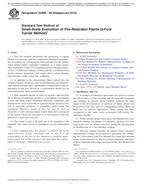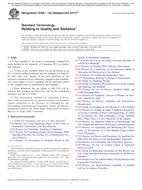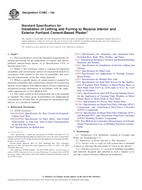1.1 Aerospace transparencies undergo high stresses induced by flight, environmental, or other factors. The transparency attachment points are especially subject to fatigue. These areas of fatigue are often obstructed or hidden from normal inspection. An inspector, following the techniques described in this practice, shall use a prism to view damage located near transparency bolt holes, voids, and delamination that are hidden by edge strips or frames.
1.2 The purpose of this practice is to provide acceptable methods for performing prism inspections of transparent materials with specific emphasis on aircraft windscreens and canopies. Caveats and lessons learned from experience are included to assist authors in writing tailored inspection instructions for specific applications.
1.3 This standard does not purport to address all of the safety concerns, if any, associated with its use. It is the responsibility of the user of this standard to establish appropriate safety and health practices and determine the applicability of regulatory limitations prior to use.
Product Details
- Published:
- 12/01/2011
- Number of Pages:
- 7
- File Size:
- 1 file , 360 KB


